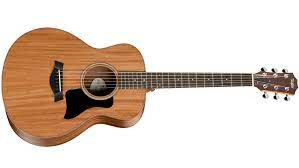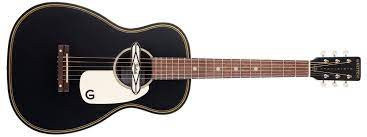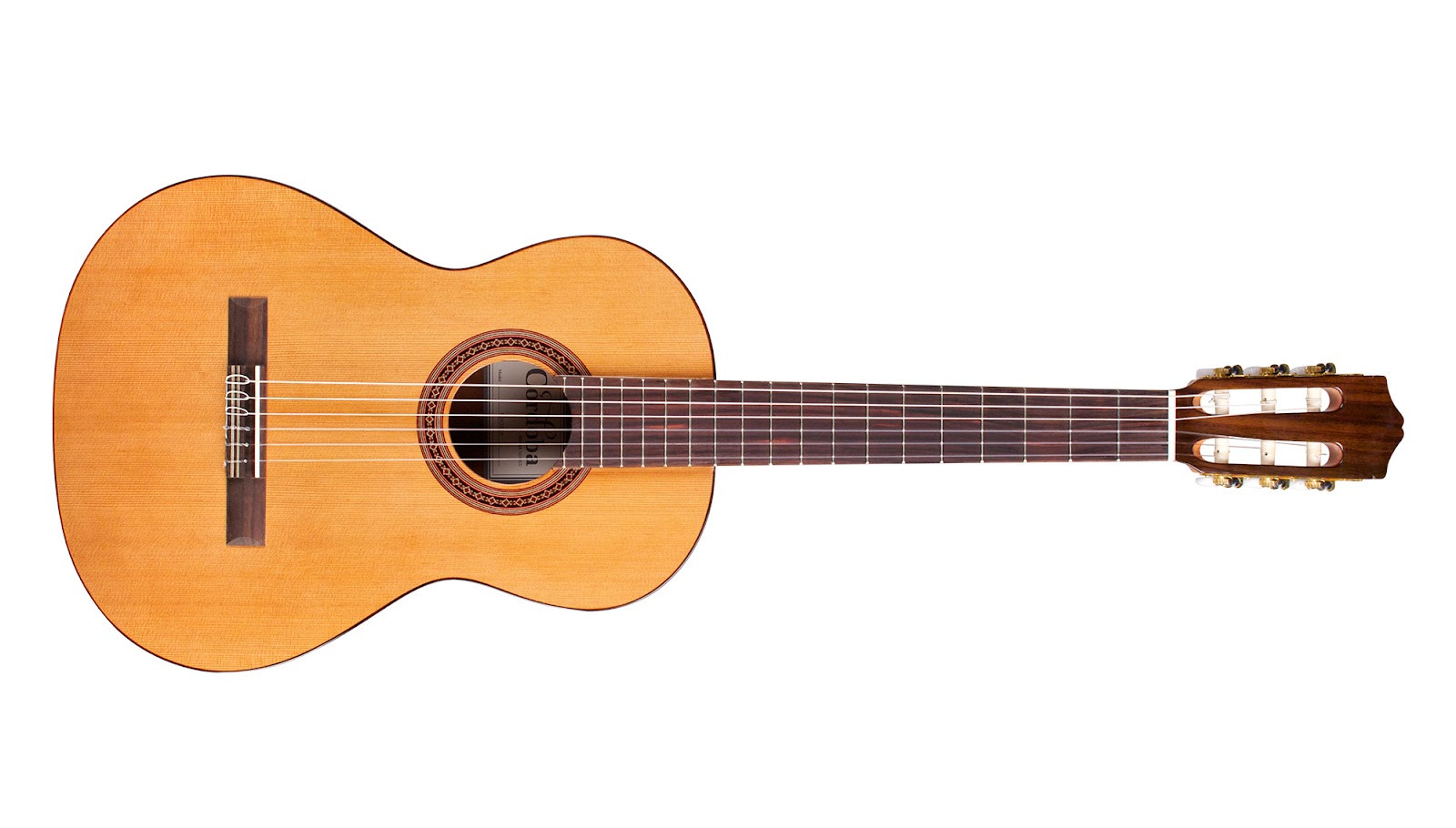Choosing your first guitar can be exciting, but also a little confusing, especially when you encounter different sizes. You might have heard about 3/4 guitars and full-size guitars and wondered what the real difference is. If you’re a beginner, or buying for a younger player, understanding these differences is key to a comfortable and rewarding learning experience.
This guide will explore the world of 3/4 Acoustic Guitars, comparing them to their full-size counterparts. We’ll break down the key distinctions, discuss who benefits most from a 3/4 size, and recommend some of the best 3/4 acoustic guitars on the market. Whether you’re a budding musician or a seasoned player looking for a travel-friendly option, let’s dive into whether a 3/4 acoustic guitar is the right choice for you.
What Exactly is a 3/4 Acoustic Guitar?
The term “3/4 guitar” refers to an acoustic guitar that is scaled down in size compared to a standard, or “full-size,” guitar. Typically, a 3/4 acoustic guitar will have dimensions around 36 inches in total length and 13 inches in width at the lower bout (the widest part of the body). In contrast, a full-size guitar generally measures about 40 inches long and 15 inches wide.
One of the most critical differences lies in the scale length. The scale length is the distance between the guitar’s nut (at the headstock) and the bridge (on the body), and it determines the string length. Full-size guitars usually have a scale length longer than 24 inches, while 3/4 guitars feature a shorter scale length, typically ranging from 20 to 24 inches.
This difference in size and scale length has several implications for playability, sound, and suitability for different players.
3/4 Guitar vs. Full-Size Guitar: Key Differences Explained
Understanding the core differences between 3/4 and full-size guitars will help you make an informed decision. Here’s a breakdown of the key factors:
Size and Playability
The most obvious difference is the size. A 3/4 guitar’s smaller body and shorter scale length make it significantly easier to handle, especially for:
- Beginners: The reduced size is less intimidating and more manageable for those just starting to learn chords and finger positioning.
- Children and Young Players: The smaller dimensions are ergonomically designed for smaller bodies and arms, making playing more comfortable and less physically demanding for kids.
- Players with Smaller Hands: Adults with smaller hands may also find the narrower neck and shorter reach of a 3/4 guitar more comfortable.
- Travelers: The compact size of a 3/4 guitar makes it an ideal travel companion, fitting easily into overhead compartments or car trunks.
Full-size guitars, with their larger bodies and longer scale lengths, can be more challenging for beginners or smaller players to manage initially. The wider neck and longer reach can require more finger stretch and hand strength.
Sound and Tone
The size difference also affects the sound produced by each type of guitar.
- Full-size guitars are known for their richer, fuller, and louder sound. The larger body cavity allows for greater resonance and projection, resulting in a deeper bass response and overall more robust tone.
- 3/4 guitars, while still producing a pleasant acoustic sound, generally have a quieter and tonally less complex sound compared to full-size guitars. They may lack some of the bass depth and volume of a larger instrument. However, advancements in guitar design and construction mean that many high-quality 3/4 guitars offer surprisingly rich and balanced tones for their size.
It’s important to note that the quality of materials and construction also significantly impacts the sound of any guitar, regardless of size. A well-made 3/4 guitar can sound much better than a poorly constructed full-size guitar.
String Tension and Tuning
Due to the shorter scale length, 3/4 guitars typically have lower string tension compared to full-size guitars tuned to the same pitch.
- Lower string tension can be easier on the fingers, especially for beginners who are still developing calluses and finger strength. This contributes to the comfortable playability of 3/4 guitars.
- However, lower string tension can also mean that 3/4 guitars may require more frequent tuning than full-size guitars, especially with cheaper models or in fluctuating temperatures. Higher-quality 3/4 guitars and proper setup can minimize this issue.
Cost
Generally, 3/4 guitars can be more affordable than comparable quality full-size guitars, especially at the beginner level. This is partly due to using less material and sometimes simpler construction techniques. However, prices vary widely based on brand, materials, and features. You can find budget-friendly 3/4 guitars under $200, as well as higher-end models approaching or exceeding $800-$1000.
Who Should Play a 3/4 Acoustic Guitar?
While often associated with beginners and children, 3/4 acoustic guitars are versatile instruments suitable for a range of players:
- абсолютные Beginners and Young Learners: As mentioned, the smaller size and easier playability make 3/4 guitars ideal for starting out, particularly for younger children (typically around ages 6-12).
- Travel Guitarists: Their portability makes them excellent travel guitars for musicians who want to practice or perform on the go.
- Players with Smaller Stature: Adults of smaller build or those with smaller hands may find 3/4 guitars ergonomically more comfortable for extended playing sessions.
- Players Seeking a Different Tone: Some players appreciate the unique tonal character of 3/4 guitars, which can be brighter and more focused, making them suitable for certain genres or playing styles.
- Professional Musicians: Even established musicians sometimes use 3/4 guitars for specific purposes, such as songwriting on the road or for intimate acoustic performances. Ed Sheeran, for example, is known to frequently play 3/4 size guitars.
Top 3/4 Acoustic Guitar Recommendations
If you’ve decided a 3/4 acoustic guitar is right for you, here are some of the best models available, catering to different budgets and preferences:
Taylor GS Mini-e Mahogany 3/4 Acoustic Guitar
 Taylor Guitars GS Mini With Mahogany Top | Long & McQuade
Taylor Guitars GS Mini With Mahogany Top | Long & McQuade
The Taylor GS Mini-e Mahogany is widely regarded as one of the best 3/4 acoustic guitars on the market, offering a premium playing experience in a smaller package. It delivers a surprisingly full and rich Taylor tone, defying its compact size.
- Key Features: Mahogany top for warm tone, layered sapele back and sides, ebony fretboard, 23.5″ scale length, built-in electronics (ES-B pickup with treble and bass controls).
- Why it stands out: Exceptional tone for a 3/4 guitar, comfortable playability, high-quality Taylor construction, and stage-ready electronics.
- Ideal for: Beginners and experienced players seeking a high-quality, portable guitar with excellent sound and performance capabilities.
- Price Point: Mid-range to higher-end for a 3/4 guitar.
Zager 3/4 Acoustic Travel Guitar
 Taylor Guitars GS Mini With Mahogany Top | Long & McQuade
Taylor Guitars GS Mini With Mahogany Top | Long & McQuade
The Zager 3/4 Acoustic Travel Guitar is designed with playability and tone in mind, incorporating features often found in higher-end instruments. Zager Guitars emphasizes ease of playing and a “precision build” for comfortable and enjoyable guitar playing.
- Key Features: Solid wood construction, custom neck design for comfortable playability, hand-carved bone nut and saddle, unique bracing system for enhanced sound.
- Why it stands out: Focus on playability and comfort, quality materials, and a reputation for producing guitars that sound “sweeter and more potent with age.”
- Ideal for: Beginners and players who prioritize ease of playing and a warm, resonant tone in a smaller size.
- Price Point: Mid-range.
Gretsch G9520E ‘Gin Rickey’ 3/4 Acoustic Guitar
 Gretsch Guitars G9520E Gin Rickey Acoustic/Electric With Soundhole Pickup, Walnut Fingerboard – Smokestack Black | Long & McQuade
Gretsch Guitars G9520E Gin Rickey Acoustic/Electric With Soundhole Pickup, Walnut Fingerboard – Smokestack Black | Long & McQuade
The Gretsch G9520E ‘Gin Rickey’ offers a unique vintage vibe and distinctive sound, thanks to its Gretsch Deltoluxe soundhole pickup. It’s a stylish and versatile 3/4 guitar with a personality of its own.
- Key Features: Laminated wood construction, Gretsch Deltoluxe soundhole pickup, walnut fingerboard, unique “Smokestack Black” finish.
- Why it stands out: Retro aesthetics, distinctive amplified tone reminiscent of electric guitars, good unplugged sound for its price, and a unique character.
- Ideal for: Players seeking a 3/4 guitar with a vintage look and a bluesy, electric-guitar-like amplified sound.
- Price Point: Budget-friendly to mid-range.
Cordoba Cadete 3/4 Classical Acoustic Guitar
 Cadete (3/4) – Cordoba Guitars
Cadete (3/4) – Cordoba Guitars
The Cordoba Cadete is a 3/4 size classical guitar with nylon strings, perfect for those interested in classical guitar or fingerstyle playing. Cordoba is known for its high-quality classical guitars, and the Cadete offers excellent value and playability.
- Key Features: Solid cedar top, mahogany back and sides, nylon strings, rosewood fingerboard, traditional classical guitar design.
- Why it stands out: Solid top construction at an affordable price, comfortable nylon strings for beginners, and a warm, resonant classical guitar tone.
- Ideal for: Beginners interested in classical guitar, fingerstyle playing, or anyone who prefers the feel of nylon strings.
- Price Point: Budget-friendly to mid-range.
Yamaha JR1 FG 3/4 Acoustic Guitar
 Gretsch Guitars G9520E Gin Rickey Acoustic/Electric With Soundhole Pickup, Walnut Fingerboard – Smokestack Black | Long & McQuade
Gretsch Guitars G9520E Gin Rickey Acoustic/Electric With Soundhole Pickup, Walnut Fingerboard – Smokestack Black | Long & McQuade
The Yamaha JR1 FG is a highly popular and budget-friendly 3/4 steel-string acoustic guitar, praised for its playability and value. Yamaha is a trusted brand known for producing reliable instruments for beginners.
- Key Features: Spruce top, meranti back and sides, rosewood fingerboard, short scale length, slim neck profile.
- Why it stands out: Excellent value for money, easy to play, reliable Yamaha quality, and a decent sound for its price range.
- Ideal for: Absolute beginners, young learners, and anyone looking for an affordable and playable 3/4 steel-string acoustic guitar.
- Price Point: Budget-friendly.
Full-Size Acoustic Guitars: When to Choose Them
While 3/4 guitars are excellent for many, full-size guitars remain the standard for acoustic guitar playing. Consider a full-size guitar if:
- You are an adult beginner with average to larger-sized hands and arms: You may adapt to a full-size guitar relatively quickly and benefit from the richer sound.
- You desire the fullest, loudest, and most resonant acoustic tone: Full-size guitars generally offer superior sound projection and tonal depth.
- You plan to primarily play in genres that benefit from a fuller sound: Genres like bluegrass, folk, and rock often sound best on full-size acoustic guitars.
- You are less concerned about portability: If you mainly play at home or in a fixed location, the larger size may not be a significant drawback.
Quick Guide: Choosing Between 3/4 and Full-Size Acoustic Guitar
| Feature | 3/4 Acoustic Guitar | Full-Size Acoustic Guitar |
|---|---|---|
| Size | Smaller, more compact | Larger, standard size |
| Playability | Easier for beginners, kids, smaller hands | Can be more challenging for beginners |
| Sound | Quieter, less bass, brighter tone | Fuller, louder, richer tone, deeper bass |
| Portability | Highly portable, travel-friendly | Less portable |
| String Tension | Lower, easier on fingers | Higher, may require more finger strength |
| Typical Users | Beginners, children, travelers, small adults | Adult beginners (average to larger size), experienced players |
Conclusion
Choosing between a 3/4 and a full-size acoustic guitar depends largely on your individual needs, physical characteristics, and playing goals. 3/4 guitars are fantastic instruments that offer significant advantages in playability and portability, making them ideal for beginners, younger players, travelers, and anyone seeking a comfortable and manageable instrument.
While full-size guitars offer a richer and more powerful sound, modern 3/4 guitars, like the models highlighted above, prove that you don’t have to sacrifice quality or tone when choosing a smaller size. Explore the options, consider your priorities, and you’ll find the perfect acoustic guitar to start or continue your musical journey.

